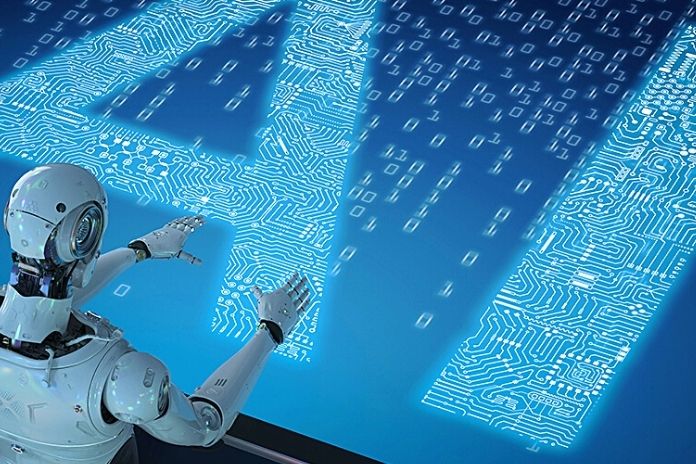Today, machine learning is considered the most mature embodiment of artificial intelligence (AI) or artificial intelligence (AI). An ML-based application can hardly replace a conventional one, in which the rules for achieving specific objectives have already been provided in the code. In fact, unlike a traditional one, software based on machine learning learns how to solve problems by experiencing directly with the data.
How Machine Learning Works
For a machine to internally generate the rules to process the input data (input space), unique ML algorithms are required (written with common languages such as C ++, Python, or Java), a lot of sample data, computational capacity, and memory.
Operation Of A Machine Learning Algorithm
According to the type of problems to be solved, the ways of learning of living beings are different. Thus machine learning algorithms predict differences depending on the knowledge they must allow. Recall that an algorithm is a series of simple operations, separate from each other, which, carried out in a predetermined order, allow to reach an expected result.
Three Types Of Machine Learning
There are three standard learning methods for which algorithms must be designed: supervised learning, unsupervised (or self-supervised), and reinforcement learning. In some cases, an ML application may involve the use of multiple types of education.
Supervised Learning
It is the most commonly used. The program is trained on pairs of input/output datasets predefined by the trainers in which the correct answers have already been identified or labeled. The model is asked to process the examples provided in input until the results are equal to those presented in the output.
Whenever the application offers a different result than expected, a feedback mechanism triggers an algorithm optimization process until the application can provide the correct answers at the end of the training. Or highly probable, in case the model recognizes non-identical patterns similar to those it has experienced.
Unsupervised Learning
Unlike the previous one, in this case, the application is only given input examples with data that are neither labeled nor classified, that is, inserted into categories based on specific evaluations (for example, regular mail or spam). The model needs to find the nonlinear relationships within the data and understand which ones help achieve the best results against the model’s goals. For example, the price of an apartment or the value of a stock market share at a particular time.
Reinforcement learning
This type of learning is mainly used in applications that interact with highly dynamic and uncertain contexts. As in supervised learning, the model is set with objectives to be achieved, a system of rewards or penalties, but no suggestions are given on the objects it may encounter or on the rules of the game adopted in the environment. The model learns how to make decisions iteratively through attempts with what is available, the rewards, and penalties.
Examples Of Machine Learning And Machine Learning Applications
An ML application depends on its developers and data scientists, who usually respond to the requests of someone who has objectives in some specific sector. Here are some examples of application areas.
Marketing
Applications based on machine learning from data can reconstruct models of reality internally and make assessments and forecasts to make decisions. For this reason, many companies operating in competitive environments leverage one or more different AI applications to refine or customize their products or services. And create new ones quickly.
Asset Management, Medicine, And Supply Chains
Often the factors to be taken into account to establish the value of the movable or real estate, make a medical diagnosis, or make choices in the management of a business chain are many and not all known a priori. For this reason, in reality, these operators must rely not only on specific skills but also on intuition, experience, and luck.
ML solutions, unlike traditional ones, extrapolate links and laws, including probabilistic ones. And they are based on knowledge created with training on thousands and thousands of examples. And this helps them to provide valuable suggestions, even if the rationale is not always understood.
Datacenter Management
Data centers have become vast and complex nerve centers in the digital age. Other indicators that are not easily or immediately recognizable are added to manage one or a network of data centers more efficiently, safely, and sustainably, in addition to the most common parameters used (temperature, humidity, consumption, etc.).
Many Data Center Infrastructure Management (DCIM) vendors are adding layers of ML to their solutions that analyze raw data collected by sensors or sent as logs and report new data types or patterns to insert into advanced analytics applications eventually.
The Benefits Of Machine Learning
Machine learning is used when the input scenarios are so complex and variable that even humans struggle to recognize and measure everything. However, it is utopian to expect that ML applications always provide exact results, as with humans. On the other hand, ML-based systems (or AI-based in general) can show similar performances to when humans, in making a decision, are not based only on logic and calculations but also on intuition and previous experience.
As companies operate in increasingly complex business scenarios and in which time-to-market is increasingly important, in many cases (but not all), the versatile ML applications allow you to avoid lengthy and expensive traditional ad hoc software development projects.
Also Read: DDoS Attacks: What They Are

